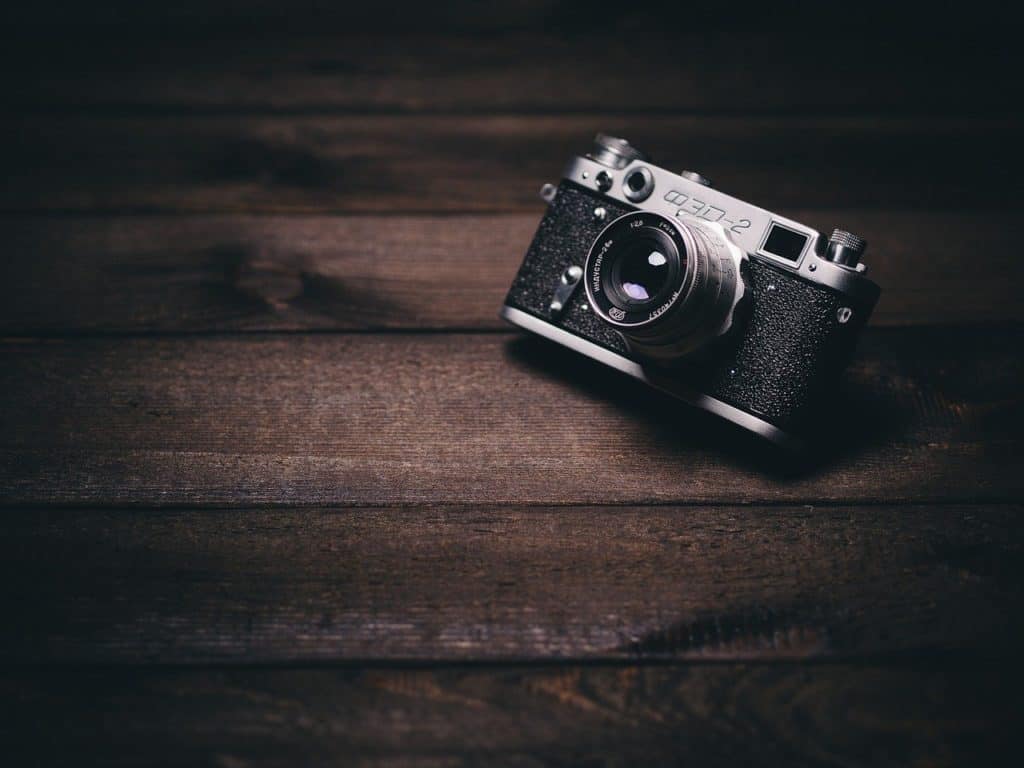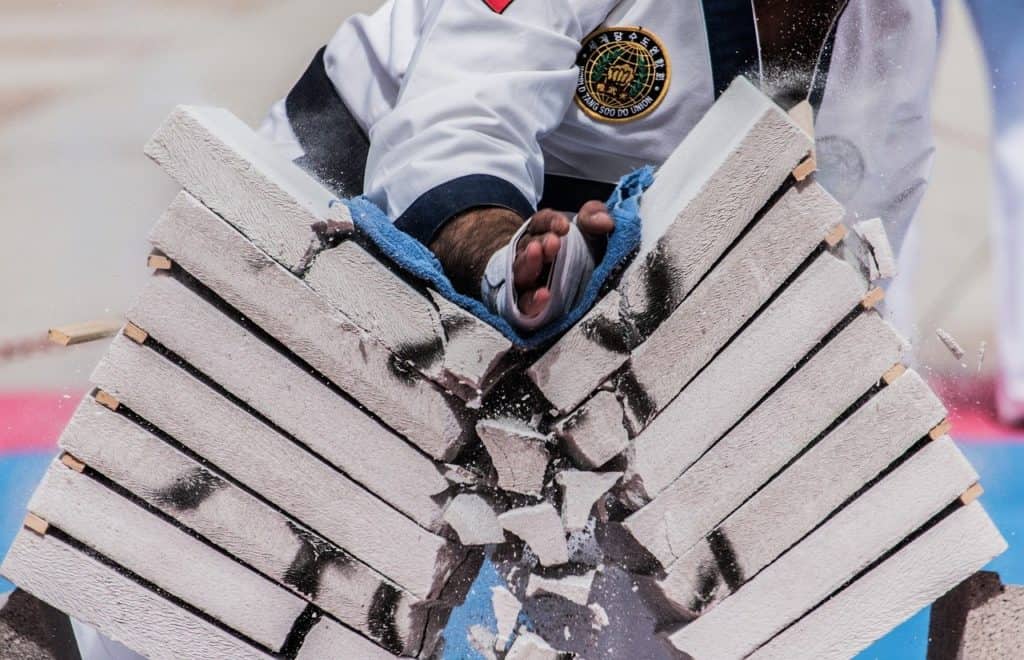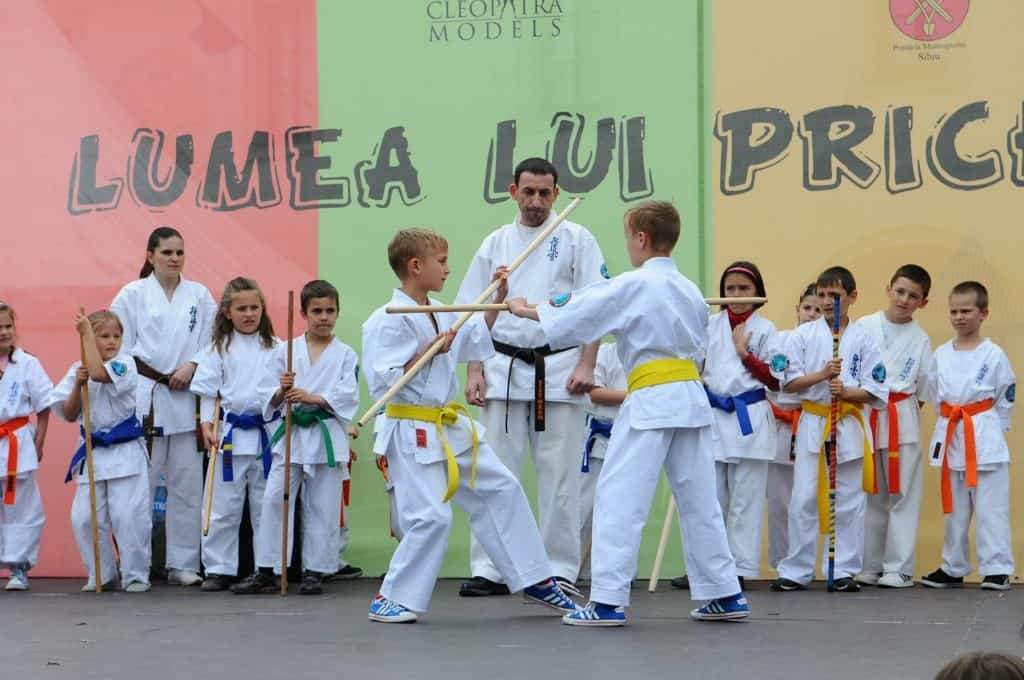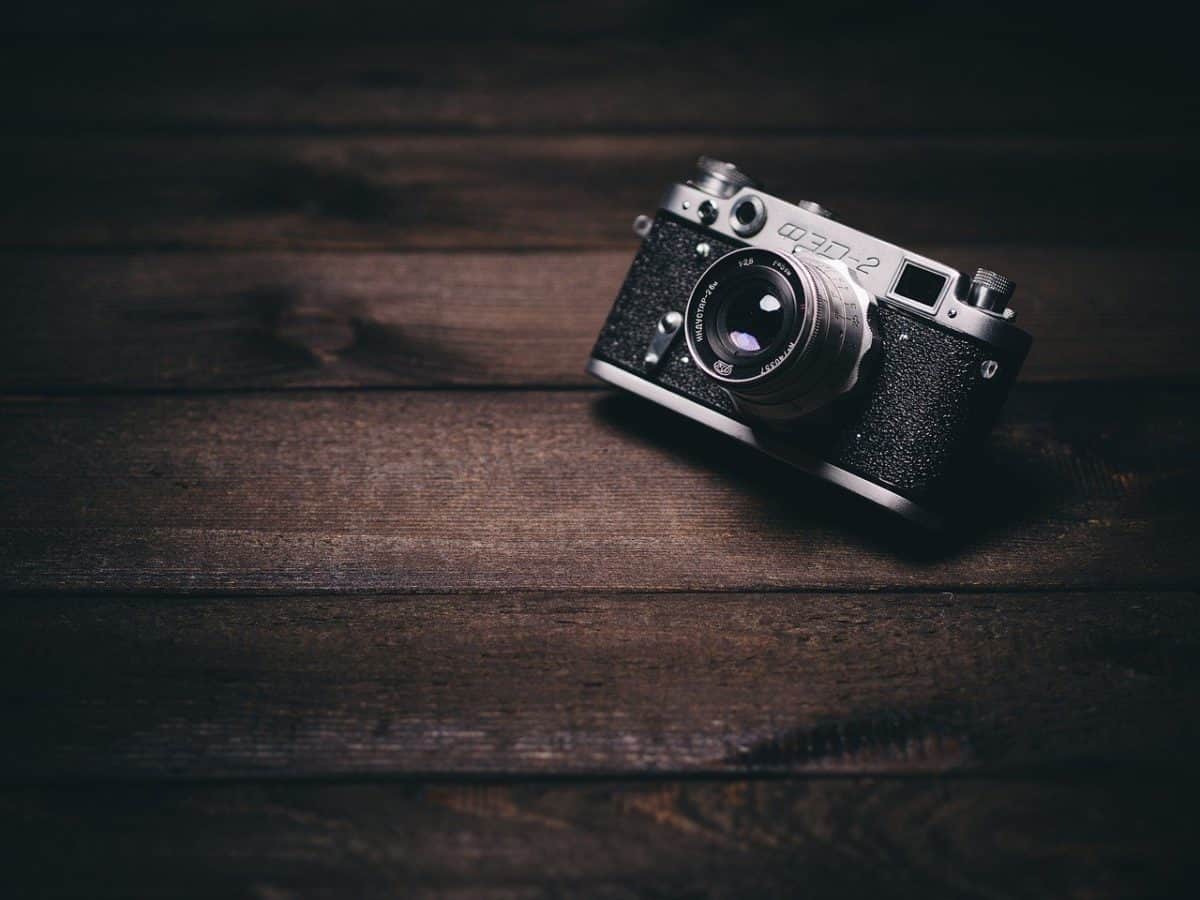
Photographing a Martial Arts event can be a challenge. With the speed at which kicks and punches are thrown and the indoor lighting, getting a picture without any blur can be difficult.
It can be all too easy to come home, after a day of taking pictures, with a bunch of dull, disappointing photos that do nothing to convey that sense of excitement of the Martial Arts tournament or belt testing. This is usually due to a combination of the wrong equipment and a lack of planning.
Thankfully both of these flaws can be fixed, and there are number of things you can do to improve up your martial arts images. Keep them in mind next time you attend an event, and you’ll increase your changes of snapping some truly stunning martial art photos.
Rules for Photographing Martial Arts
There may or may not be written guidelines. But there is always someone in charge, either your child’s instructor (he or she may be called the Sensei (Japanese) or Sifu (Chinese)) or, in the case of a tournament, the tournament organizer.
There may be good places to stand and places that are off limits (hopefully not in front of other spectators eager to see their children in action). Always ask first, don’t simply assume you know the proper etiquette. How close you can get to the action may determine how you shoot the action and what camera or lens you use.
Etiquette in Martial Arts Photography
Martial Arts, whether I am talking about Chinese Kung Fu, Korean Tae Kwon Do, Japanese Karate, or various Americanized versions – are all about discipline, etiquette and firm rules.
This applies not just to your martial arts student child, but to the spectators at various events as well. Proper etiquette is the key to appropriate behavior as a photographer.
Let’s face it, we’ve all seen a really annoying photographer at an event. Don’t be that photographer!
Put Away or Turn Off Your Flash
Let’s talk about flash photography. At best, flashes can be annoying, at worst they can be dangerous. There is a temptation to use flash because martial arts events are usually indoors and the lighting may be poor.
The instructor or tournament organizer may have posted a “no flash photography” rule, but, if not, it is just common sense to avoid flash. Below, we discuss how to take great pictures without flash on both cell phones and DSLRs.
Using a DSLR For Martial Arts Photos
DSLR (digital single lens reflex) cameras are your best option for top quality martial arts photographs of your child. DSLRs come in a dizzying array of varieties and with an equally dizzying array of options, so it is impossible to describe every option. However, there are some general rules that will help your photography.
Lens
First off, let’s talk about lenses. The most basic DSLRs come with a fixed lens that probably zooms out to a modest telephoto. You have no options here; you will probably want to zoom out to the maximum and take your photos. However, most DSLRs have interchangeable lenses. Yours probably came with what is called a “kit” lens.
Kit simply describes the lens that came in the box with the DSLR body. It is probably a zoom lens that zooms from a modest wide angle to a modest telephoto. You will probably want to do most of your shooting at the longest telephoto setting.
However, especially where you can’t get as close to the action as you might like, you might want to buy a longer telephoto. Here you join the ranks of sports photographers and bird watchers.
But what to buy? Here again there are a dizzying array of options, both in terms of length and in terms of price. You can find a quality lens that brings you closer to the action for a few hundred dollars, but there are extremely long telephotos lenses (generally intended for the professionals) that can cost over $1,000 or even over $10,000.
Unless you are working as a professional photographer, when you aren’t watching your child in his or her martial arts classes, you can safely stay in the more modest price range.
Remember too that the very long lenses have disadvantages: not only are they expensive but they can be awkward to use, are heavy, and don’t work as well in low light situations.
Now that you are all set with your DSLR and lens, you need to determine which camera settings best capture your martial arts student. Your camera probably has a dozen or so knobs or dials and literally hundreds of possible settings. Again, every camera is different and we can’t get too specific, but there are general rules that carry across all brands and models.
Because there are so many confusing options, let’s admit it, many of us simply turn the camera on, take off the lens cap and point and shoot with the camera in the “automatic” mode.
Many cameras with a vast variety of sophisticated shooting options are never switched out of the automatic mode. We will give you just a few options that will help improve your martial arts photography.
First of all – and most important – in fully automatic mode and in a low-light situation your DSLR may decide that a flash is needed. Fortunately, your DSLR has what we will call an “automatic no flash” mode (each camera has a different name for it).
So your first assignment is to find that mode on your camera. It should be easy to find but if not it should be explained to your DSLR’s handbook.
As an intermedia step between fully automatic shooting and advanced shooting methods, many DSLRs have a variety of pre-set specialized shooting modes. In these modes the camera makes a number of complex adjustments depending of the subject matter.
For example, there may be settings for flowers, fall foliage, sunsets, etc. For our purposes, there is probably a setting for sports photography. If you don’t want to learn about a lot of complex settings simple switch to the sports settings and the DSLR’s computer will make the smart choices for you.
For more advanced settings we need to talk a bit about light and how your DSLR captures it. Here three factors come together: aperture, shutter speed and ISO. As we noted above, martial arts events are usually indoors and the lighting may be poor. In addition, the action may be fast. Let’s talk about the three factors.
Aperture
Aperture, simply put, refers to the opening in the lens that lets light hit the sensor that records the image (in the “old days” the light would hit the film). The bigger the opening the less time the DSLR needs to capture the image. Rather than letting the camera pick the aperture, you can switch to “aperture priority” mode, which means that you select the aperture and the camera will select the appropriate shutter speed.
Typically, in low light situations you will select the widest aperture your lens has so that the camera will select a higher shutter speed and you will be able to capture high-speed martial arts action without blur. The other advantage of a wide open aperture is that the depth of field is shallow and distracting backgrounds will blur out.
Shutter Speed

Alternatively, you can switch to “shutter speed priority” mode. Here you select a fast shutter speed that will be fast enough to capture the action without any blur – for example 1/500th of a second – and the DSLR will select the appropriate aperture.
If you decide ot set the shutter speed manually, you will need a fast shutter speed for action shots, so this should be the setting you base all others around.
Start with a shutter speed of around 1/500th of a second and experiment based on your results. If you find your photos are coming out dark, try opening the aperture wider or increasing the ISO.
ISO
Finally, if the lighting is so poor that you can’t get the optimum combination of aperture and shutter speed to capture the martial arts action you may want to adjust the ISO. What is the ISO? ISO stands for International Organization for Standardization. (It is in French, so that is why it is ISO instead of IOS.)
In DSLR photography the ISO number stands for the sensitivity of the image sensor. In the days of film photography, it stood for the sensitivity of the film. If you started out shooting film you might have used Kodachrome with an ISO of 64. For high speed action you might have switched to an ISO of 400 or even 1,000.
The same holds true with digital, the higher the ISO the greater degree of sensitivity. Most of us will never change the ISO on their DSLR from the factory setting.
But you can experiment and increase the ISO setting in low-light situations. You will notice a very slight decrease in quality, including what we call “noise,” tiny dots of white. Play with the ISO setting before you attend an important event and see what works best for you.
Cell Phones And Martial Arts Photography

These days virtually everybody owns a cell phone with a built-in camera. Depending on the model, age, and price of the cell phone, it may have as sophisticated a camera function as a basic DSLR. In many cases you can operate the camera by simply pointing and shooting and letting the computer make all the decisions.
As we discuss in the DSLR section above, the first thing you want to learn to do is to switch to “no flash” mode. Otherwise the camera may decide it needs to shoot off the flash to best capture the image.
It could be an embarrassing moment if the flash pops up and fires off after, as we discussed above, you were informed by your child’s instructor that flash photography is forbidden!
Beyond going flash-free, the cell phone camera may have a low light setting and may have a zoom (telephoto) function. Experiment with these settings before you attend a once in a lifetime martial arts event.
As a final note on cell phone photography, despite limitations compared to more sophisticated DSLRs, cell phones have two advantages.
First, minutes after your daughter is promoted to green belt, you can post the great news on Facebook or your favorite social media platform.
Second, for many people their cell phone serves as a portable photo album, you can show off your child’s accomplishments any time or anywhere.
Posed Photographs
Finally, it often happens that at the conclusion of a martial arts event there may be a time set aside for posed photographs. You can be sure that your child’s instructor will be honored to pose with him or her, awarding a trophy or a new color belt.
Here to, any prohibitions on flash photography will be waived, you can get as close as you want to the subject, and you don’t have to worry about capturing fast action.
Final Thoughts
Martial arts photography presents unique opportunities as well as unique challenges. You want to preserve events such as belt test promotions and tournaments with high-quality photographs, whether on your cell phone, basic, or advanced DSLR.
With the few simple adjustments we explained above, and following the rules of etiquette that are part of the martial arts world, you can successfully capture these special moments.


